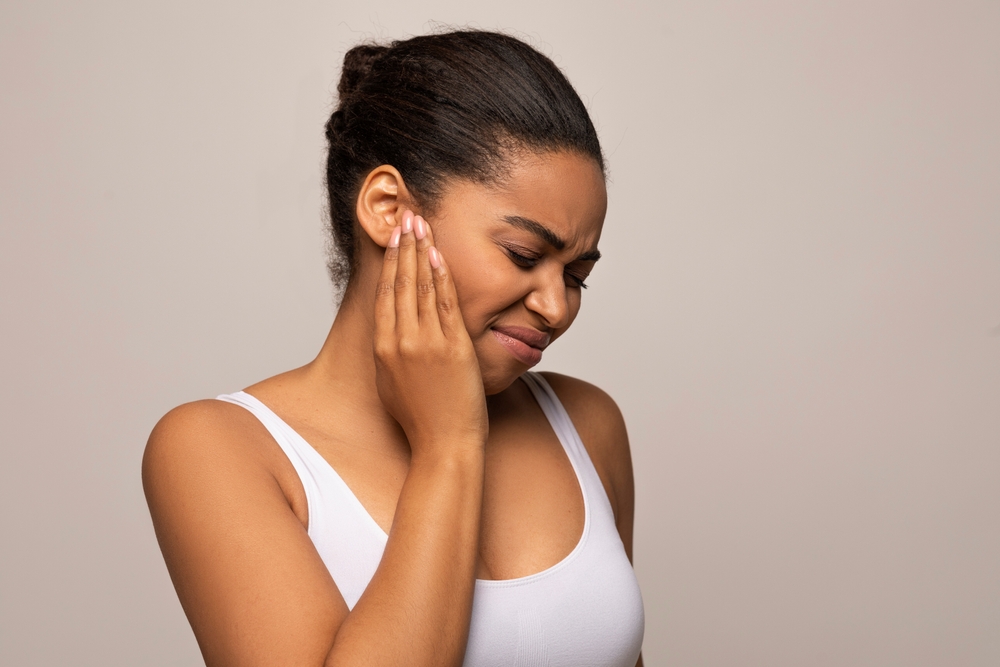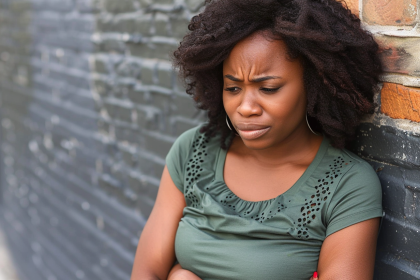We’ve all become familiar with the classic COVID symptoms — the fever that has you kicking off blankets one minute and shivering the next, the cough that keeps your roommates awake, and that bizarre experience of biting into your favorite spicy dish only to taste… absolutely nothing.
But there’s another set of symptoms that doesn’t make the headline news much — the ones affecting your ears. That annoying ringing that won’t stop, sudden dizziness that makes you grab the nearest wall, or pain that feels like someone’s stabbing your eardrum with a tiny knife. Turns out, COVID has been messing with our ears all along, and many people have no idea their ear troubles and that positive test result might be connected.
What COVID is secretly doing to your ears
When COVID invades your body, it’s not just targeting your lungs. The virus can make itself comfortable in your middle and inner ear too, causing inflammation and fluid buildup that rivals the aftermath of a deep-water diving excursion.
Those eustachian tubes — the tiny passageways connecting your middle ear to your throat — become inflamed battlegrounds. When they swell up, fluid gets trapped and pressure builds. The result isn’t just pain but a whole constellation of ear-related misery.
The most disorienting symptom might be the sudden dizziness or vertigo that makes you feel like you’re spinning after a playground merry-go-round session. This isn’t your ordinary lightheadedness — it’s a room-spinning, can’t-walk-straight kind of disorientation that can literally knock you off your feet.
Then there’s tinnitus — that maddening phantom sound that only you can hear. Whether it’s ringing, buzzing, hissing, or what sounds like a tiny symphony orchestra tuning up inside your head, it can drive you to distraction, especially when you’re trying to sleep.
Many COVID patients also report ear fullness, a sensation like your ears need to pop but stubbornly refuse to. Imagine the feeling of descending in an airplane when your ears won’t equalize — now imagine that lasting for days or weeks.
Perhaps most concerning is the potential for hearing loss. While usually temporary, some people have experienced more persistent hearing changes after COVID. The virus doesn’t play favorites here — it can affect one ear or both, and the hearing loss can range from barely noticeable to significant.
Who’s most likely to get COVID ear troubles
While anyone can develop ear-related complications from COVID, certain factors might put your ears at higher risk of becoming collateral damage in your body’s battle with the virus.
Age matters significantly here — but probably not in the way you’d expect. While older adults face higher risks for severe COVID overall, it’s actually children under three who are more vulnerable to ear complications. Their eustachian tubes are smaller and more horizontal, making them perfect pathways for fluid buildup and infection.
Your smoking habits might come back to haunt you too. Whether you’re lighting up yourself or regularly breathing someone else’s secondhand smoke, your ear tissues become more susceptible to inflammation and infection when COVID comes calling.
If you’ve recently recovered from another respiratory infection like a cold or flu, your ears might already be in a vulnerable state when COVID strikes. It’s like your ear defenses haven’t fully recovered from one battle before the next assault begins.
Allergy sufferers have another strike against them. Seasonal allergies already cause inflammation in the nasal passages and eustachian tubes, essentially creating a pre-inflamed environment that COVID can exploit.
Interestingly, your gender might play a role too. Some studies suggest males might face higher risks for primary ear infections from viruses like COVID, while females might be more likely to develop secondary bacterial infections after the initial viral assault.
When COVID leaves but the ear problems stay
For some unlucky individuals, ear symptoms don’t pack up and leave when the rest of COVID moves out. These persistent issues can become part of long COVID, that frustrating collection of symptoms that hang around like unwelcome houseguests long after the initial infection.
Long COVID affects a significant percentage of people who’ve had the virus, with symptoms varying wildly from person to person. While the exhaustion, breathing difficulties, and brain fog get most of the attention, the ear-related symptoms can be just as disruptive to daily life.
Persistent tinnitus after COVID can be particularly challenging to cope with. Imagine trying to concentrate on work or enjoy a quiet evening when there’s a constant internal sound that only you can hear. For some, this ringing or buzzing becomes a permanent unwanted companion.
Ongoing balance issues are another potential long-term complication. The virus may damage the delicate tissues of the inner ear that control balance, leaving you feeling unsteady on your feet for weeks or even months after recovering from the acute infection.
The mechanism behind these lingering symptoms isn’t fully understood, but experts suspect direct tissue damage from the virus, inflammation that continues after the infection clears, or potentially autoimmune reactions triggered by COVID might be to blame.
Taming the ear pain monster
The good news is that most ear pain related to COVID resolves on its own as your body fights off the infection. In the meantime, several over-the-counter options can help make life more bearable.
Pain relievers like ibuprofen and acetaminophen can dial down both the pain and inflammation that’s making your ears throb. Just remember that ibuprofen works best for inflammation while acetaminophen targets pain without affecting inflammation much.
Decongestants can be your best friend when dealing with COVID ear fullness. Medications like Sudafed help reduce the swelling in your nasal passages and eustachian tubes, potentially allowing trapped fluid to drain and pressure to equalize.
If allergies are complicating your COVID ear issues, antihistamines like Benadryl or Zyrtec might help calm the additional inflammation they cause. Just be aware that some antihistamines can cause drowsiness, which might compound the fatigue you’re already feeling from COVID.
When over-the-counter approaches aren’t cutting it, healthcare providers have stronger weapons in their arsenal. Antibiotics won’t help with COVID itself since it’s a virus, but they can tackle any opportunistic bacterial infections that might develop in your middle ear during or after COVID.
For severe inflammation, doctors might prescribe corticosteroids to calm the immune response that’s causing swelling in your ear tissues. While these won’t speed up your body’s fight against the virus, they can provide significant relief from the inflammatory aftermath.
When your ears are screaming for professional help
While many ear symptoms will improve with time and home treatment, certain warning signs should send you straight to a healthcare provider.
If your ear pain or tinnitus continues to hang around after your other COVID symptoms have packed their bags and left, it’s time for professional evaluation. Persistent symptoms might indicate a secondary infection or tissue damage that needs specific treatment.
Repeated ear infections following COVID deserve medical attention too. Your immune system might be struggling to fully recover, leaving your ears vulnerable to recurrent problems that need more aggressive intervention.
Fluid that refuses to drain from your middle ear can lead to more serious complications if left untreated. If you’re experiencing continued fullness or hearing loss weeks after COVID, a healthcare provider can evaluate whether that fluid needs medical assistance to resolve.
Any worsening of symptoms always warrants attention. Ear pain that suddenly intensifies, hearing loss that progresses, or dizziness that becomes more severe might indicate a complication that requires prompt treatment.
Remember that COVID can sometimes cause serious complications beyond typical symptoms. Seek immediate medical care for warning signs like difficulty breathing, persistent chest pain, new confusion, or bluish lips or face — including cases where ear symptoms are part of the picture.
The bottom line on COVID and your ears
The connection between COVID-19 and ear problems is real but often overlooked. From pain and pressure to dizziness and hearing changes, the virus can affect your ears in ways that range from mildly annoying to genuinely disruptive.
Understanding this connection helps make sense of ear symptoms that might otherwise seem mysterious, especially if they appear days after other COVID symptoms or linger after you’ve otherwise recovered.
Most COVID-related ear issues will improve with time and basic home care. But don’t hesitate to seek medical attention for persistent or severe symptoms. Your hearing is too important to take chances with, and proper treatment can help ensure that temporary ear problems don’t become permanent ones.
As we continue learning about this complex virus and its wide-ranging effects on the body, paying attention to all potential symptoms — including the less publicized ones affecting our ears — remains an important part of protecting our overall health.














